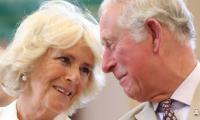Reviving the Awami National Party’s (ANP) non-political front, namely the Pashtun Aman Committee: Loya Jirga, ANP Sindh chief Shahi Syed spent several days meeting with leaders of the ruling Pakistan Peoples Party (PPP) and heads of Sindhi ethnic parties to discuss the incidents across the province being termed “killing on ethnic grounds”.
Worried about the situation leading towards possible ethnic tension between Sindhi and Pashtun communities in the province after Jeay Sindh Tehreek leader Irshad Ranjhani was shot dead on February 6 by a Cattle Colony UC chairman, Abdul Raheem Shah, who is a Pashtun, and three Pashtun labourers’ killing in Naudero on February 13, Syed convened two separate meetings to discuss the situation: one with the party’s provincial leaders and the other with the Loya Jirga’s leaders.
“The Loya Jirga [grand assembly] is a non-political body formed for the protection of the community’s rights,” said Syed. “After the situation created in the wake of the recent killings, it was important to revitalise the Loya Jirga to play its role in maintaining harmony among the two ethnic communities.”
On Sunday, Syed and the Loya Jirga’s members separately met Qaumi Awami Tehreek chief Ayaz Latif Palijo and Sindh United Party head Syed Jalal Mehmood Shah, and they all agreed that they will not allow the “scheme of instigating a conflict between Sindhis and Pashtuns” to become successful.
Before these meetings, Syed had met Sindh Chief Minister Syed Murad Ali Shah on February 13 to discuss the situation. “In all our meetings, we were in agreement that the victims of both attacks were human beings and their murders equally shocked everyone,” Syed told The News on Sunday. “Criminals don’t have a religion or an ethnicity.”
He said that all the parties have agreed on impartial investigations into the incidents to unmask the culprits. Referring to a news conference of the Pakistan Tehreek-e-Insaf’s (PTI) Pashtun lawmakers from Karachi who criticised him for meeting the CM, Syed said that even after getting a number of its Pashtun leaders elected from the city’s Pashtun-populated constituencies, the PTI did not carry out its responsibility of preventing the unfortunate incidents from turning into possible ethnic conflict.
Loya Jirga’s relevance
In April 2006, Syed had formed the Loya Jirga to muster support from Pashtun transporters and influential Pashtun political figures, especially those belonging to the Pakhtunkhwa Milli Awami Party, the PPP and the Pakistan Muslim League-Nawaz (PML-N).
The Loya Jirga was formed in reaction to the decision of the then provincial government to demolish Katchi Abadis (squatter settlements) and to ban two-stroke rickshaws in Karachi. A number of public rallies were organised across the metropolis during June 2006 and a one-day strike was observed on June 30 that year. The Loya Jirga came to prominence later that year when it forced the government to accept its demands.
But after winning two provincial assembly seats from Karachi in the 2008 general elections and joining the Sindh government, a majority of the members gradually left the Loya Jirga, making the alliance dormant.
Shah Nawaz Jadoon, a Pashtun PTI MPA elected from Keamari, told The News on Sunday that the ANP has been trying to make itself relevant in today’s politics through the revival of dead Jirgas.
“The PTI has buried the ANP’s politics not only in Karachi but also in Khyber Pakhtunkhwa, and now Syed has been politicking on the recent killings. It is a dead Jirga, and the locals no longer trust such unelected bodies.”
Jadoon said that the PTI’s Sindh chapter had sent its parliamentary party leader Haleem Adil Shaikh to Bajaur to attend the funeral of the three Pashtun labourers. “Why did Syed not go to Larkana to help their relatives take their bodies to their hometown? Why was he not at the funeral?”
Syed, however, said that the Loya Jirga is a non-political body, and that it only became active when the situation needed it. “When it was formed, a drive of demolishing Pashtun neighbourhoods was under way. It was the ANP and the Loya Jirga who timely met Sindhi nationalist leaders for foiling the conspiracy of fomenting ethnic violence in the province.”
Jirgas in Karachi
The forming of Pashtun Jirgas in Karachi is not a new phenomenon. In the recent past, leaders of Mehsud tribesmen living in the city formed a Jirga for demanding justice in the case of Naqeebullah Mehsud, a young Pashtun shopkeeper and aspiring model who was killed in a fake shootout by the District Malir police.
PTI MNA Saifur Rehman Mehsud, Mehmood Mehsud and Zafar Mehsud were the key leaders of the Jirga. In June 2015, Jamaat-e-Islami Karachi’s Pashtun leaders, especially its District West chief Abdul Razzaq Khan, had made efforts to form a Jirga comprising representatives of various Pashtun clans, traders and civil society groups mainly to put pressure on the police to stop extrajudicial killings and harassment of Pashtuns, especially those hailing from the tribal areas. But it did not work well.
In 1997, Tariq Khan, a Pashtun leader from the PML-N, had formed a Jirga to resolve a love-marriage issue involving a Pashtun girl, Riffat Afridi, and an Urdu-speaking boy, Kanwar Ahsan.
In 2009, the Muttahida Qaumi Movement had formed a Haq Parast Aman Jirga, while in 2007, the JI’s then MPA Hamidullah Advocate had formed a Karachi Aman Jirga. Analysts believe that these two Jirgas were formed to counter the ANP-backed Loya Jirga.
The picture shows a pharmacy. — AFP/FileThe Karachi administration has launched a campaign to check the expiry dates...
In this still, Karachi Mayor Barrister Murtaza Wahab addresses an event on April 25, 2024. — Facebook/Barrister...
In this still, Sindh Inspector General of Police Ghulam Nabi Memon chairs a meeting at the Central Police Office on...
Representational image shows police tape. — AFP/FileAn elderly man who ran a general store was shot and killed in...
A handcuffed suspect stands behind the bars with a policeman standing outside the jail in this undated image. —...
In this still, Sindh Chief Minister Syed Murad Ali Shah meets federal energy minister Owais Ahmad Khan Laghari in...







